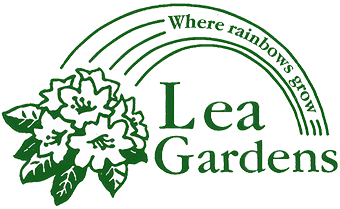From the Origins with John Marsden-Smedley
It was in the village of Lea that John Marsden-Smedley (1867-1959) spent much of his life. As well as being the local squire, he was the owner of John Smedley Ltd, a manufacturer of quality woollen garments, which continues to flourish. In 1895 he rebuilt the farmhouse of Lea Green into the fine building which is still used today as a residential and day centre by the local authority.
The gardens at Lea Green were typical for a house of that period, featuring high sheltered walls and hot houses for growing fruit and flowers. These early gardens reflected John Marsden-Smedleys great love of plants, and the local area still owes much of its wooded nature to his dedication to the planting of trees. John Marsden-Smedley tried planting rhododendrons in various areas of his land, and remnants of these trials may still be seen in parts of his old woodland. These earliest trials yielded one ideal position with the much desired shelter for successfully establishing rhododendrons; the present side of Lea Gardens.
In addition, the mature trees of Scots Pine, Yew, Sycamore, Chestnut, Oak and Silver Birch gave the wind protection and partial shade so loved by the plants.
In 1935, at the age of sixty-eight, John Marsden-Smedley was inspired by his visits to Bodnant and Exbury to build his own rhododendron garden on the site he had located behind his existing garden. Skilled craftsmen from his estate used the abundant stone littering the area (originally an old quarry site dating back to Roman times) to fashion paths and verandas in the local style of dry stone walling. Soil was brought from other parts of his estate to top up beds of sand. In some cases ash was brought from the furnaces of his woollen mill to add to this topping-up process.
The Collection was started
A collection of rhododendrons and azaleas was now started, and records were kept showing plants to have come from leading growers and breeders of the 1930s. Knaphill, Exbury and Bodnant all feature in the early handwritten entries detailing plant suppliers and varieties ordered. Efforts were made to establish less-hardy varieties and it was found that even those specimens expected to survive only in West Coastal regions could be grown in this sheltered quarry site. During this period John Marsden-Smedley collected some 350 varieties of specie and hybrid rhododendrons and azaleas in a two acre site, which he developed up to his death in 1959 at the age of 92.
Fifty years of ownership and care begin with the Tye family
The estate was then divided and sold, and it was at this time that the rhododendron gardens were acquired by Peter and Nancy Tye. They were joined a year later by Joyce Colyer who brought her expertise as the estate manager for John Marsden-Smedley, together with an intimate knowledge of the gardens and their contents. Nancy Tye showed an artistic flair for rockery and garden design, creating new alpine screes to complement the existing rhododendron collection. Fresh areas of the garden were developed with the introduction of the new plants, rock screes, ornamental shrubs and trees, and in 1960 Peter, Nancy and Joyce opened the garden to the public. The house at Lea Gardens was a later addition, built in 1967.
In 1980 Jon Tye (son of Peter and Nancy) and his wife Jenny took over the running of the gardens. Since then the size of the gardens has increased significantly, and a Tea Shop was opened at the start of their tenure. They also added an additional 200 varieties of rhododendrons and azaleas to the collection, and became more involved in plant propagation and sales.
A new enlarged Tea Shop was opened in 2007, and this has proved very popular. Jon and Jenny’s son Peter is now responsible for much of the day to day running of the gardens. This brings us to Lea Gardens as you know it today.
